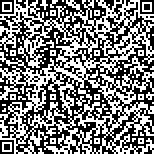| 引用本文: | 李翔,赵琴琴,郑鸣之,胡珏,吴赛伟,范骁辉.黄芪甲苷和丹参素对大鼠心肌缺血后心功能的保护作用研究[J].中国现代应用药学,2021,38(18):2208-2214. |
| LI Xiang,ZHAO Qinqin,ZHENG Mingzhi,HU Jue,WU Saiwei,FAN Xiaohui.Study on Protective Effects of Astragaloside IV and Danshensu on Cardiac Function Against Myocardial Ischemia in Rats[J].Chin J Mod Appl Pharm(中国现代应用药学),2021,38(18):2208-2214. |
|
| |
|
|
| 本文已被:浏览 1808次 下载 913次 |

码上扫一扫! |
|
|
| 黄芪甲苷和丹参素对大鼠心肌缺血后心功能的保护作用研究 |
|
李翔1, 赵琴琴2,3, 郑鸣之1, 胡珏1, 吴赛伟4, 范骁辉5
|
|
1.杭州医学院基础医学与法医学院, 杭州 310053;2.浙江省立同德医院药学部, 杭州 310012;3.浙江省中医药研究院, 杭州 310007;4.浙江大学医学院附属第四医院, 浙江 义乌 322000;5.浙江大学药学院, 中药科学与工程学系, 杭州 310058
|
|
| 摘要: |
| 目的 研究黄芪甲苷和丹参素对心肌缺血大鼠心功能的保护作用及其潜在机制。方法 采用结扎大鼠左冠状动脉前降支法制备心肌缺血(myocardial ischemia,MI)模型。黄芪甲苷(astragaloside IV,AST)和丹参素钠(sodium danshensu,DSS)灌胃给药28 d,评价心功能[左室射血分数(ejection fraction,EF%);左室短轴缩短率(fractional shortening,FS%)]及心电图ST变化;Masson染色评价心肌组织纤维化程度。AST和DSS低、中、高3个剂量(20,40,80 mg·kg-1)单给及合给干预MI后7 d,以曲美他嗪(trimetazidine,TMZ)为对照,检测各组血清中游离脂肪酸(nonesterified free fatty acids,NEFA)和葡萄糖水平;计算心脏/体质量系数评价MI损伤情况;以HE染色评价心肌组织病理学。结果 与模型组相比,MI 28 d后40 mg·kg-1 AST和DSS显著提高左室EF%和FS%(P<0.01),减少梗死心肌纤维化程度,40 mg·kg-1 DSS抗心肌纤维化作用显著(P<0.05)。MI 7 d后,10 mg·kg-1 TMZ抑制血清NEFA水平,升高血糖含量;AST和DSS合给(AD组)比单给进一步下调血清NEFA水平;AD组比单给进一步提高血糖水平,其中80 mg·kg-1的AST和DSS单用使血糖低于假手术水平。MI 7 d后,心脏/体质量系数显著高于假手术组(P<0.05),AD组能显著逆转MI引起的心脏/体质量系数升高。HE染色显示缺血心肌组织存在大量炎性细胞浸润,心肌细胞排列紊乱,有水肿,AST和DSS给药干预7 d能有效减轻上述现象。结论 AST和DSS能在大鼠MI 7 d和28 d 2个阶段发挥缺血心肌保护、改善心功能作用,其保护作用可能与调控缺血心肌糖脂代谢、抗炎、抗心肌纤维化等作用有关。 |
| 关键词: 心肌梗死 心功能 黄芪甲苷 丹参素钠 游离脂肪酸 血糖 |
| DOI:10.13748/j.cnki.issn1007-7693.2021.18.003 |
| 分类号:R285.5 |
| 基金项目:浙江省中医药科技计划项目(2017ZQ008,2018ZQ048);浙江省自然科学基金项目(LQ17H280001,LYY19H280005);浙江省医药卫生科技项目(2019KY366);浙江医学高等专科学校科研基金项目(2015B01) |
|
| Study on Protective Effects of Astragaloside IV and Danshensu on Cardiac Function Against Myocardial Ischemia in Rats |
|
LI Xiang1, ZHAO Qinqin2,3, ZHENG Mingzhi1, HU Jue1, WU Saiwei4, FAN Xiaohui5
|
|
1.School of Basic Medical Sciences and Forensic Medicine, Hangzhou Medical College, Hangzhou 310053, China;2.Department of Pharmacy, Tongde Hospital of Zhejiang Province, Hangzhou 310012, China;3.Zhejiang Academy of Traditional Chinese Medicine, Hangzhou 310007, China;4.The Fourth Affiliated Hospital Zhejiang University School of Medicine, Yiwu 322000, China;5.Department of Chinese Medicine Science & Engineering, College of Pharmaceutical Sciences, Zhejiang University, Hangzhou 310058, China
|
| Abstract: |
| OBJECTIVE To study the protective effects of astragaloside IV(AST) and danshensu on cardiac function in rats with myocardial ischemia and its potential mechanisms. METHODS Myocardial ischemia(MI) was induced by permanent ligation of the left anterior descending coronary artery in rats. AST and sodium danshensu(DSS) were administered intragastricly for 28 d, and cardiac function (ejection fraction, EF%; fractional shortening, FS%) was evaluated by echocardiography and ECG ST segment change. Masson staining was applied to evaluate the degree of myocardial fibrosis. 7 d post-MI, AST and DSS were given at low, medium and high doses (20, 40, 80 mg·kg-1) both alone and in combination, and trimetazidine(TMZ) was used as control to detect the serum levels of NEFA and glucose. Heart weight/body weight ratios(HW/BW) were calculated to evaluate ischemic myocardial injury. The myocardial histopathology was further evaluated by HE staining. RESULTS Compared with the model group, 40 mg·kg-1 AST and DSS significantly increased left ventricular EF% and FS%(P<0.01), and reduced the degree of myocardial fibrosis in the infarct myocardium. 40mg·kg-1 DSS showed significant anti-myocardial fibrosis effect (P<0.05). 7 d post-MI, 10 mg·kg-1 TMZ inhibited serum NEFA level and increased serum glucose; the combined administration of AST and DSS(AD group) further down-regulated serum NEFA level comparing with their single administration. AD i.g. further raised serum glucose levels, while 80 mg·kg-1 AST and DSS i.g. alone decreased serum glucose levels comparing with the sham level. The HW/BW in the MI 7 d group were significantly higher than that in the sham group(P<0.05), which could be significantly reversed in each treatment group with different doses of AST and DSS. HE staining showed a large number of inflammatory cell infiltration in ischemic myocardium, together with disordered arrangement of myocardial cells and edema. AST and DSS i.g. for 7 d could effectively alleviate the above phenomena. CONCLUSION AST and DSS can protect ischemic myocardium and improve cardiac function at 7 and 28 d post MI in rats. The protective effects of the two components against ischemic myocardial injury and cardiac function improvement may be associated with the regulation of glucose and lipid metabolism, anti-inflammation and anti-myocardial fibrosis in ischemic myocardium. |
| Key words: myocardial ischemia cardiac function astragaloside Ⅳ sodium danshensu free fatty acid blood glucose |
|
|
|
|
